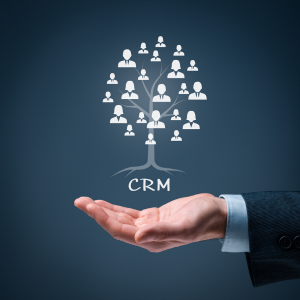Making the decision to implement a new CRM system is a significant step for any business. The upside of doing it is clear - increased efficiency and marketing capabilities, improved customer relationships and sales pipelines and more insights from your company data.
If you need more convincing, just take a look at some numbers taken from HubSpot’s own The 2024 State of Marketing & Trends Report, which showed that marketers who use a CRM were 128% more likely to say their marketing strategy this year was very effective compared to marketers who don’t use a CRM.
On top of that, 93% of marketers who used HubSpot reported their marketing strategy had proved effective in the previous 12 months.
However, we know that implementing a new CRM comes with some significant challenges. Having helped over 500 businesses start using HubSpot, the experts at ProsperoHub are well placed to understand not only the difficulties growing businesses face when migrating, but more importantly, how to avoid them.
So if you’re thinking of moving your operations to HubSpot, or have recently started using HubSpot but feel like you aren’t getting maximum value, read on to ensure you avoid the three most common pitfalls of implementing a new CRM.
Challenge 1: Data issues
Today more than ever, high-quality data is the cornerstone of any successful CRM implementation. Unfortunately, many businesses - especially those who have grown rapidly and organically - struggle with data inconsistencies, inaccuracies and incompleteness. The result? However good your CRM is, if you put bad data into it, the only outcomes will be poor decision making, missed opportunities and poor customer experience.
So how can you mitigate risks around data? According to our experts the first step is to dedicate the time and resources to properly clean up your data before it gets anywhere near HubSpot. Allocate resources to go through all your data to correct any errors, remove duplicate records and highlight where information might be missing.
Once you’re confident that your existing data is in good shape, it’s time to think about mapping your existing data against HubSpots fields. This ensures that the data is accurate and consistent when you do import it. And that you’ll be able to use HubSpot’s powerful analytics to start to generate insights and strategies.
Finally you want to ensure that the systems and processes are in place to guarantee data integrity moving forward. This can be as simple as making the right people have the right permissions within HubSpot. Or as complex as building out a full data team with responsibility for quality controlling the company’s information management systems.
Challenge 2: A lack of organisational buy in
A successful CRM implementation requires buy-in from all levels of the company, from the senior management team to the people on the ground who’ll be using the system day-to-day. Plus, at every level what people want, need and expect a CRM to do will be different, making long-term, company-wide buy-in hard to achieve.
But here’s the thing. If the whole company hasn’t brought into the benefits of your new CRM, the chances of it delivering are vanishingly small.
Here, the key is clear communication. It’s vital that from the moment you make the decision to switch to HubSpot, you’re able to powerfully articulate the benefits of the system, how it aligns with the company’s business goals, and perhaps most importantly, how moving operations over to HubSpot will make people’s lives easier and their jobs better.
In our team’s experience, it’s often easier to get people to understand on a practical level how HubSpot might help them do their jobs than it is to sell a big company vision to people.
Involving teams in the process from the start when you plan the HubSpot system you’ll use, as well as making sure there’s plenty of training opportunities throughout the process are both key to making sure everyone in the business understands the system's capabilities and how to use it effectively.
Finally, it’s important you are open to listening to your teams’ feedback and issues during and immediately after the transition period. It’s all too easy to dismiss negative comments when you’ve been heavily involved in the implementation. But take the time to understand what people are really saying and you’ll often unlock new ways of working that improve how HubSpot functions within your business.
Challenge 3: Integration Issues
A company’s tech stack is a complex thing. But making sure HubSpot plays nice with any existing business systems is crucial for a seamless workflow and key for unlocking growth potential within your company.
That’s because having a strong tech base that works seamlessly for your business enables you to increase productivity, create highly targeted campaigns, connect and engage with your customers and resolve problems faster.
So how do you make sure your systems work well together and troubleshoot any issues that do arise?
The first step is doing a thorough audit of your existing systems and mapping out how they interact. From this, you should be able to say with a high degree of confidence which existing systems can be scrapped when you switch to HubSpot (clue: it’s probably most of them) and which you’ll need to keep. For those that you are keeping, you can then start to think about how you’ll integrate them: here your choices probably boil down to an API integration, some sort of pre-built connector or potentially a custom development.
Once you’ve built these data pipes, it’s critical the connections are carefully tested. You want to be certain that information is flowing into HubSpot correctly and behaving as you’d expect it to. Afterall, no one wants to be second guessing sales numbers or revenue figures because they are concerned HubSpot is double counting something!
Where we can help
Overcoming these challenges can be overwhelming for many businesses. This is where a CRM implementation partner like ProsperoHub can make a significant difference.
By partnering with ProsperoHub, you can increase your chances of a successful CRM implementation and achieve your business goals faster.
With our expertise in HubSpot and CRM implementation, we can help you:
- Assess your current environment and identify potential issues.
- Develop a tailored implementation plan.
- Migrate data efficiently and accurately.
- Provide comprehensive training and support.
- Optimise your HubSpot system for maximum impact
To conclude, here at ProsperoHub we understand that implementing a CRM system is a complex undertaking, but we genuinely believe that, with careful planning and execution, migrating to HubSpot can yield huge benefits.
Would you like to learn more about how ProsperoHub can continue to help you with your CRM implementation? Contact us today for a free consultation.


.png?width=1940&height=1024&name=Part%20of%20Siloy%20logos%20(2).png)



.png?width=125&height=125&name=DataMigration534x534%20(1).png)
-1.png?width=125&height=125&name=Untitled%20design%20(4)-1.png)
